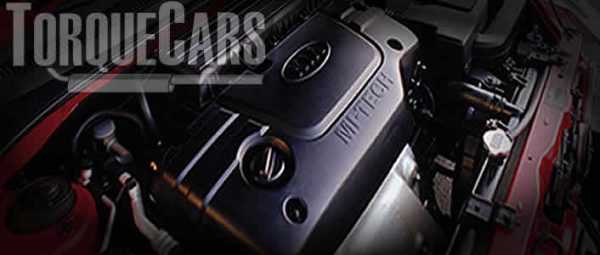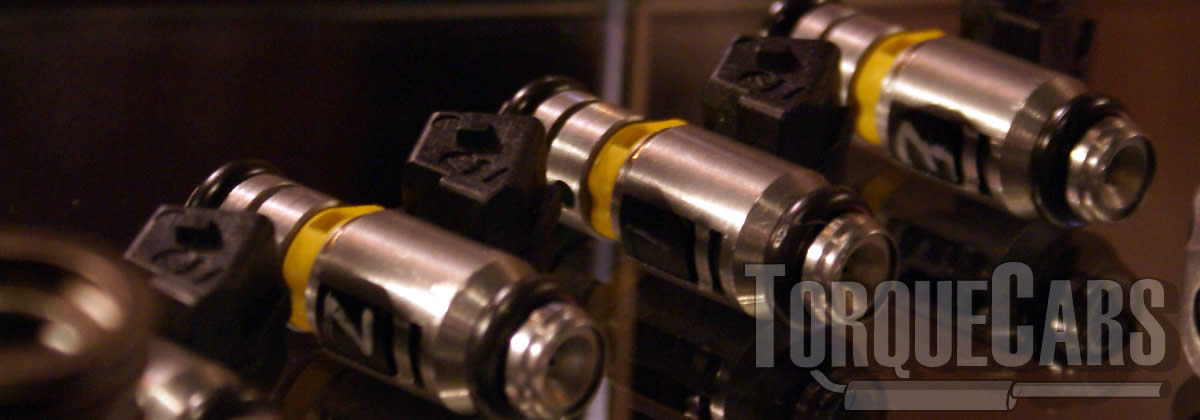Tuning the Hyundai Alpha
"All you need to know about tuning and performance parts on the Hyundai Alpha engine!"
Carref prides itself on providing the latest tips and guides to your modification project.
We review and look at Alpha tuning and show the best upgrades.
Hyundai Alpha are popular tuning projects and with the right performance upgrades like a remap, turbo upgrades and camshafts you will noticeably improve your driving opportunities.
We rely on our visitors to pass on tips and tell us about their projects and what worked on their car, and this article is the culmination of the feedback we have received. First let us look at the history and specs of this engine and then consider which tuning modifications work best on it.
History of the Engine

- G4EA 1.3 Carb 71hp 81lbft
- G4EH 1.3 Injection 83hp 86lbft
- G4EK 1.5 90hp 97 lbft (There was also a turbo version released)
- Alpha-II G4FK 101 hp 100 lbft
- 1.5 Alpha-II G4FK DOHC 106 hp 101 lb-ft
- 1.6 Alpha-II G4ED 103 hp 105 lb-ft
- G4EE Alpha II 1.4
What are the most effective Alpha parts
When talking about the best top for your Alpha engine, we are going to focus that give the biggest return for your cash.
Significant gains can be made from cam upgrades. Altering the cam profile alters the intake and exhaust durations on the engine and can dramatically change the bhp and power output.

Fast road cams normally boost the torque throughout the rev band, you could drop a little low end power but your top end will be higher.
Competition cams, boost the top end band but as a result the car will not idle smoothly and low end power nearly always suffers.
On a daily driver must carefully try to match your torque band to your driving style.
I would be surprised if you have found a Competition cam is a pleasure to live with when in heavy traffic.
Different Alpha engines respond better to different cam durations so set your engine up on a rolling road.
The engine timing and injectors and fuel pump also will say much on the bhp gains you'll achieve.
Altering valve durations can alter the bhp band and on most engines the exhaust and intake durations do not need to match, although most cams and tuners use matched pairs there are some advantages to extending the intake or exhaust durations.
Please watch our introduction Video tutorial to car tuning. Be sure to subscribe and support our new channel.
How to tune your car
- Improve the handling
Focus on Suspension improvements, such as coilovers and make sure the bushings are in good order and that the alignment is correct. Then focus on improving the brakes, with a big disk brake conversion kit and fast road brake pads.
- Remove restrictions
Focus on the intake and exhaust with filters being the common point of restriction in a tuned car. Intercoolers may also become restrictive on turbo engines so this may also need to be uprated.
- Burn more fuel & air
Increase the fuelling so it matches the air coming into the engine. The ratio is important so you need to improve the fuel pump and injectors, so the head mods, big valve conversions, fast road camshafts and forced induction upgrades extra supply of air is adequately met.
- Test and replace any weak parts
Weak areas are commonly the clutch, the turbocharger and pistons and crankshaft in a highly tuned engine. Makes sure these components will cope with your power aspirations.
- The Tune or Remap
A cars ECU controls the fuel, timing, spark and even the turbo in some cases, so to fully extract your gains you should remap the car last and this will fully release the power. Some cars are easy to map, and others require piggyback ECU's or aftermarket ECU's but this is the most vital step of your tuning project.
Modifying to Stage 1:
Sports exhaust manifold, Remaps/piggy back ECU, Drilled & smoothed airbox, Fast road camshaft, Panel air filters, Intake headers.
Modifying to Stage 2:
fuel pump upgrades, Sports catalyst & performance exhaust, high flow fuel injectors, Ported and polished head, induction kit, Fast road cam.
Modifying to Stage 3:
Engine balancing & blueprinting, Competition cam, Crank and Piston upgrades to alter compression, Twin charging conversions, Adding or Upgrading forced induction (turbo/supercharger), Internal engine upgrades (head flowing porting/bigger valves).
ECU flashing will help unlock the full potential of all the modifications you've done to your Alpha.
It will usually give around 30% more power on turbocharged vehicles and 15% on NASP engines, but you mileage will vary depending on the modifications you've done and the condition of your engine.
It is the main goal to any tuning task to push air into the Alpha engine
Air Intake manifolds transmit the air from the air cleaner and allow it to be pulled into the engine cylinders.
Design and rate of flow of the Air Intake manifolds can make a substantial change to fuel atomisation on the Alpha.
Commonly we find the headers are improved through a performance upgrade, although some manufacturers provide decently flowing headers.
Big valve conversions on the Alpha, getting 3 or 5 angle valve jobs and porting and head flowing will also improve bhp and torque, & importantly will make space for increasing the bhp and torque increase on other parts.
Which turbo upgrades are best?

NASP engines need quite a lot of work when you add a turbo, so we have a separate guide to help you take into account the pros and cons of going this route on your Alpha
The more air to get into an engine, the more fuel it can burn and uprating the induction with a turbocharger upgrade makes massive power gains.
If your motor has forced induction parts are simpler to install and you will discover turbocharged engines will have uprated components.
However you'll find engines will need better parts at higher power limits
Research these restrictions and fit better quality components to survive the power.
We've seen car owners spending a lots of money on turbocharger upgrades on the Alpha only to experience the whole thing explode on it's first outing after it's been completed.
Big turbo units tend to suffer no power at low rpm, and low capacity turbo units spool up more quickly but do not have the high rpm engines power gains.
Thankfully the selection of turbos is always increasing and we commonly find variable vane turbos, where the vane angle is altered according to speed to lower lag and increase top end bhp.
Twin scroll turbos divert the exhaust gases into a couple of channels and feed these at differently profiled vanes in the turbocharger. They also improve the scavenging effect of the engine.
It is not unusual that there's a limitation in the air flow sensor AFM/MAF on these engines when considerably more air is being drawn into the engine.
Going up you'll find 4 bar air sensors coping with quite large power gains, whereas the OEM air sensor limited bhp at a much lower level.
Adding a supercharger or additional turbo will make large bhp gains, although more difficult to get working. We have a twincharger bhp adding guide if you want to read more.
Fuelling
Don't forget to boost the fuelling when you are increasing the performance - it makes the car more thirsty.  We would recommend you to over specify your injectors flow rate.
We would recommend you to over specify your injectors flow rate.
The accepted safe increase is to add another 20% when buying an injector, helps cope with injector deterioration and gives you some spare capacity should the engine require more fuel.
We think this one is common sense, but you'll need to match your fuel injector to the type of fuel your car uses as well.
Choosing the right performance exhaust
One of the most common mistakes and problems we see in tuning projects is usually down to the exhaust, or rather a poorly chosen exhaust for your engine.
You only need to to boost your exhaust if the current exhaust is actually causing a restriction.
On most factory exhausts you'll see your flow rate is still good even on modest power gains, but when you start pushing up the power levels you will need to get a better flowing exhaust.
Don't go with the widest exhaust you can buy you'll slow up the exhaust flow rate - the best for power gains are usually between 1.5 to 2.5 inches. It is the shape and material more than the bore size.
Typically exhaust restrictions are traced to the catalyst installed, so adding a faster flowing high performance alternative will help avoid this restriction.
Weak spots Issues & problem areas on the
The engines are generally reliable and solid as long as they are regularly serviced and maintained.
Regular oil changes are vital on the , especially when tuned and will help extend the life and reliability of the engine.
For more information on Tuning your engine please join us in our friendly forum where you can discuss tuning options in more detail with our owners. It would also be worth reading our unbiased tuning articles to get a full grasp of the benefits and drawbacks of each modification.
Please help us improve these tips by sending us your feedback in the comments box below.
We love to hear what our visitors have got up to and which upgrades work best for them on each model of car. Comments are used to improve the accuracy of these articles which are continually updated.
If you liked this page please share it with your friends, drop a link to it in your favourite forum or use the bookmarking options to save it to your social media profile.
Check out TorqueCars new YouTube channel, and see their awesome new content...
Feedback
Please use our forums if you wish to ask a tuning question, and please note we do not sell parts or services, we are just an online magazine.
Help us improve, leave a suggestion or tip
